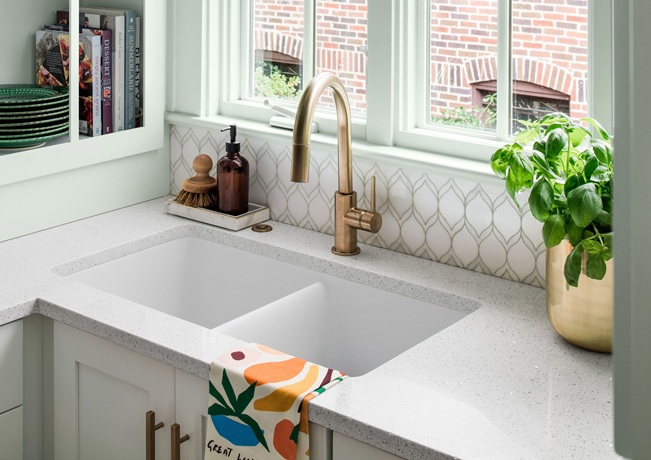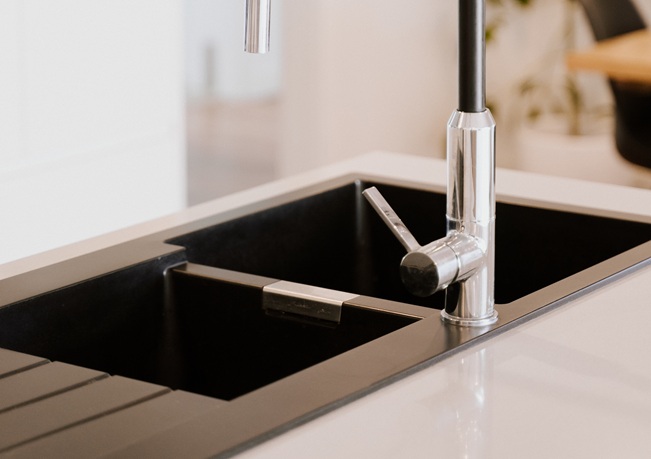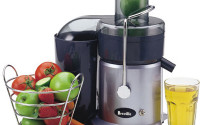Kitchen Sinks: Which One Is the Ideal Type for Your Home?
A kitchen sink is an important part of your kitchen, combining both style and function. It’s used every day for tasks like washing dishes, cleaning fruits and vegetables, and preparing food. With so many different shapes, sizes, and styles to choose from, picking the right sink can be tricky. The material and how it’s installed will also affect the price. It’s important to find a sink that fits both your needs and your budget.
Types of Kitchen Sinks

Single-Bowl
In case you have a smaller kitchen and limited workspace, investing in a single-bowl sink is what you need. It’s just one bog, open basin with no divider. It’s a very practical choice, a modern addition to make the space workable and aesthetically pleasing. It’s one of the most reliable kitchen sink Australia has to offer. The best thing about it is that it makes washing big pots and pans easily. You can lay them flat in the sink without worrying about water splashing all over the benchtop.
This style is great for smaller households or anyone living on their own. The only drawback is the lack of a built-in drying area, so you’ll most likely need to wash and dry the dishes straight away. While a drying rack is an option, it can take up valuable space you can use for prepping meals or cooking. These sinks come in a range of sizes, are affordable to install, and simple to clean and maintain.
Double-Bowl
Double-bowl sinks are a great choice if you prefer hand-washing your dishes. It has a divider which allows you to multitask. You can use one side for washing and the other one to soak your dishes. Some people even use the second side for rinsing, drying and prepping food. They have a very classic, timeless design that stood the test of time and is still a favourite in many households.
Double-bowl sinks come in all sorts of shapes, sizes, price ranges and colours. You can find one that suits your kitchen’s interior easily. They also give you the option to install a garbage disposal, which is a bonus compared to single-bowl models. However, they do take up more space and are not suitable for smaller kitchens.
Low-Divide
This style of sink is often called the low score sink. It features a divider that only goes halfway up the basin. It’s practical for washing big pots and pans while still giving you some space to organise your dishes. Think of it as a merge between a single-bowl and a double-bowl sink. The only catch is that because the divider is lower, you can’t fill either side all the way up. So, if you need deep water for rinsing or washing, you’ll have to do it elsewhere in the kitchen.
Overmount
An overmount kitchen sink, also known as a top-mount or drop-in sink, sits on top of the counter with a rim around it. It comes in a variety of materials, so it’s pretty versatile and easy to customise to fit your style. It’s also a very popular kitchen sink in Australia.
Homeowners love it because it’s easy to install, you can do it by yourself. Not hiring a professional can be good for your budget. Plus, it’s not expensive. The downside is that it can take up a lot of counter space. The rim can also be tricky to clean, and crumbs and debris can get stuck underneath if you’re not careful enough.
Undermount
An undermount sink is installed below the counter, creating a smooth, uninterrupted surface between the sink and the benchtop. This style adds a sleek, modern look to your kitchen, making it a popular choice for those who are after a clean and polished aesthetic. Plus, it’s not just about looks, it also makes cleaning a lot easier, because there’s no rim to get in the way.
You can easily push debris and garbage straight into the sink without anything getting caught on the rim, which is a big plus when you’re tidying up. Another big plus is the installation. It’s very simple. You just glue the sink onto the counter. Keep in mind that materials such as cast iron or fireclay aren’t suitable for this type of sink. You’ll need something lighter so it can easily stick to the surface.
Sink Materials

Cast Iron
When you’re looking for kitchen sinks for sale, choosing the right material is crucial. Cast iron will work perfectly if you’re going for a vintage, country-style, or farmhouse-style kitchen. What gives these sinks a glossy finish is the porcelain enamel coating. This makes them very popular with homeowners. Cast iron is heavy but durable. However, you have to be careful because the coating can chip easily. Never use abrasive cleaners because the coating will get damaged.
Stainless Steel
Stainless steel sinks are easy to install and are lightweight. They come in a variety of styles and are budget-friendly. They’re classified by their gauge or sheeting thickness. The thicker the gauge the heavier and cheaper the sink and vice versa. Stainless steel is rust and stain-resistant but if you bump it, it makes a loud noise.
Fireclay
Fireclay is produced with fusing clay and glaze together at a temperature of 800 degrees Celsius. These sinks are similar to cast iron ones but are more durable. They won’t get stains or chips, and you can use abrasive cleaners. Because of the way they’re manufactured, they’re on the more expensive side. However, they’re worth the investment.
Granite
Granite is a durable, stain-resistant material that blends in perfectly in modern kitchens. It’s also non-porous and easy to clean. However, if you hit it with a heavy object it can chip. Also, it’s heavier so you’ll need a sturdy surface to place it on.
Cleaning and Maintenance
Your sink needs routine cleaning and upkeep. It’s important to keep it clean since it gets a lot of dirt and bacteria from washing the food and dishes. Each material is different and needs a different approach. For instance, abrasive cleansers don’t work well with fireclay. To clean the surface, you should only use a gentle cloth.
Mild cleansers and a towel to avoid watermarks are effective ways to clean stainless steel. Use a soft cloth and baking soda paste to clean cast iron sinks. Stay away of wire brushes and use non-abrasive cleansers. Experts recommend using a 50/50 combination of bleach and water to clean granite. Apply mineral oil once every six months and avoid ammonia.



